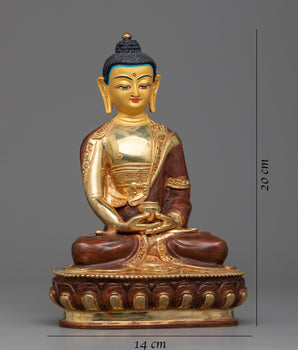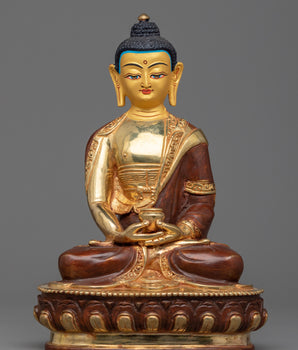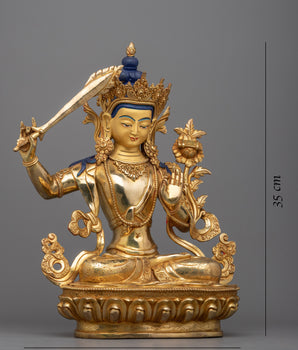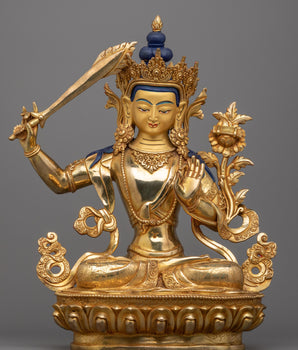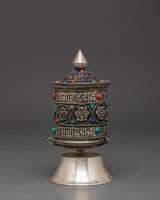
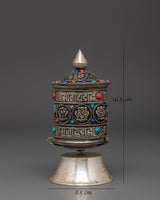
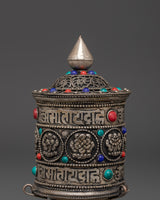
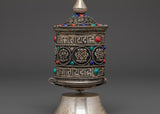
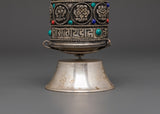
Handmade Brass Tibetan Prayer Wheel | Authentic Tibetan Spiritual Decor

100% AUTHENTIC

HANDMADE

FREE SHIPPING
Handmade Tibetan Prayer Wheel | Coral and Turquoise Inlaid
--------------------------------------------------------
Size: 16.5cm (Height) x 8.5cm (Width)
Weight: 0.26kg
Materials: Brass, Artificial Stones: Coral, Turquoise
--------------------------------------------------------
About our Prayer Wheel :
The Handmade Tibetan Prayer Wheel is a sacred artifact designed to enhance your spiritual practice and meditation. This prayer wheel is exquisitely crafted and has elaborate brass work embellished with vivid artificial stones such as coral and turquoise, which represent healing and protection. Standing 16.5 cm tall, this prayer wheel is both a gorgeous addition to your shrine or altar and a powerful tool for chanting and prayer.
The prayer wheel is a vital component of the Tibetan Buddhist tradition, designed to promote peace, cultivate good karma, and foster spiritual growth. The beautiful design, along with the relaxing rhythmic spin of the wheel, creates a sense of serenity and meditation. Whether used in rituals, as a spiritual gift, or as a striking piece of decor, this prayer wheel adds a sense of calm and cultural richness to any space.
Introduction to Prayer Wheel
A prayer wheel is cylindrical on a spindle and is used in Tibetan Buddhism. It is typically inscribed with the mantra "Om Mani Padme Hum" and rotated by hand as a form of spiritual practice and to accumulate merit. Spinning the wheel is believed to have the same spiritual benefits as verbally reciting the mantra. The use of prayer wheels is widespread in Tibetan Buddhism and has spread to other cultures.
How does the Buddhist Prayer Wheel benefit us?
The benefits associated with rotating the wheel are numerous. It promotes knowledge, compassion, and bodhicitta in the practitioner and improves siddhis (spiritual powers such as clairvoyance, precognition, etc.). The practitioner can repeat the mantra as often as possible while the wheel is rolling, maintaining a calm, meditative attitude. A Tibetan Buddhist tradition holds that after a practice session, one should dedicate any acquired merits to the benefit of all sentient beings. Then three times Om Ah Hum. This is usually among Tibetans after finishing any Buddhist practice, including the prayer wheel exercise.
How do you set up your own Buddhist Shrine?
• Find a clean, quiet, and uncluttered spot
• Set up an altar table and cover it with an altar cloth that calls to you
• Place your sacred item at the center










